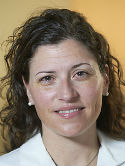MRI screening in a clinic population with a family history of breast cancer Journal Article
| Authors: | Yu, J.; Park, A.; Morris, E.; Liberman, L.; Borgen, P. I.; King, T. A. |
| Article Title: | MRI screening in a clinic population with a family history of breast cancer |
| Abstract: | Background: Breast MRI is increasingly being used in patients at increased risk for breast cancer; however, guidelines for MRI screening are inadequately defined. We describe our experience with MRI screening in a large population of women with a family history of breast cancer. Methods: We retrospectively reviewed the Memorial Sloan-Kettering breast cancer surveillance program prospective database from April 1999 to July 2006. Patients with a family history of breast cancer and at least 1 year follow-up were identified. All patients were offered biannual clinical breast examination (CBE) and annual mammography (MMG). MRI screening was performed at the discretion of the physician and patient. Results: Family history profiles revealed 1,019 eligible patients; median follow-up was 5.0 years. MRI screening was performed in 374 (37%) patients resulting in a total of 976 MRIs during the study period. Cancer was detected in 9/374 patients (2%) undergoing MRI screening. Seven cancers were detected by MRI only, for a cancer detection rate of 0.7% (7/976) for screening MRI. When stratified by family risk profile, the positive predictive value (PPV) of MRI was higher (13%) in those patients with the strongest family histories and lower (6%) in patients with less significant family histories. Conclusions: MRI screening can be a useful adjunct to CBE and MMG in patients with high-risk family histories of breast cancer, yet it has low yield in patients with lower-risk family histories. These data suggest that MRI screening should be reserved for those at highest risk. © 2007 Society of Surgical Oncology. |
| Keywords: | adult; controlled study; aged; aged, 80 and over; middle aged; retrospective studies; major clinical study; genetics; mutation; cancer risk; united states; cancer patient; nuclear magnetic resonance imaging; follow up; methodology; magnetic resonance imaging; laboratory diagnosis; breast cancer; incidence; cancer screening; health survey; mass screening; pathology; breast neoplasms; retrospective study; risk assessment; tumor suppressor gene; mammography; genes, brca1; genes, brca2; family history; breast tumor; physician; new york city; image processing, computer-assisted; image processing; population surveillance; false negative reactions; paget nipple disease; carcinoma, intraductal, noninfiltrating; carcinoma, ductal, breast; breast cancer screening; familial breast cancer |
| Journal Title: | Annals of Surgical Oncology |
| Volume: | 15 |
| Issue: | 2 |
| ISSN: | 1068-9265 |
| Publisher: | Springer |
| Date Published: | 2008-02-01 |
| Start Page: | 452 |
| End Page: | 461 |
| Language: | English |
| DOI: | 10.1245/s10434-007-9622-2 |
| PUBMED: | 18026801 |
| PROVIDER: | scopus |
| DOI/URL: | |
| Notes: | --- - "Cited By (since 1996): 8" - "Export Date: 17 November 2011" - "CODEN: ASONF" - "Source: Scopus" |
Altmetric
Citation Impact
BMJ Impact Analytics
Related MSK Work






